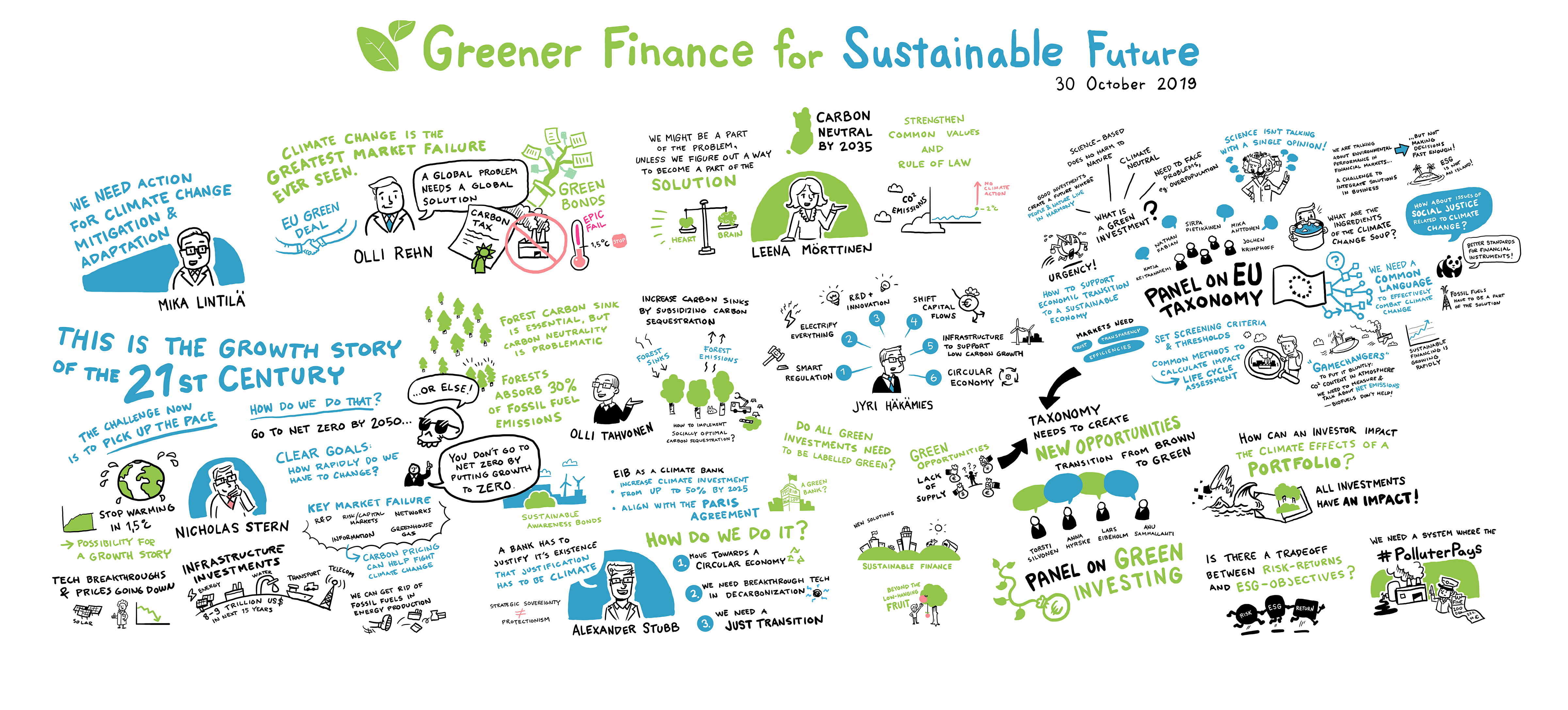Climate change creates two types of financial stability risks: physical risks resulting from extreme weather events and transition risks caused by exit from carbon-intensive business models.
The financial stability risks caused by climate change can be significant if financial losses increase due to, for example, more frequent and severe extreme weather events. Insurance companies, banks and investors will bear their share of these losses. On the other hand, if climate policies, technological innovations or changes in consumer preferences make carbon-intensive business models financially unprofitable, investors may have to recognise losses on their assets. This is referred to as transition risk. Transition risks are significant from the perspective of the financial sector as a whole, as not all entities will be able to divest their carbon-intensive investments without incurring losses.
Green finance plays a fundamental role in the achievement of energy and climate targets. The Bank of Finland raises awareness and promotes dialogue on green finance and climate risks and cooperates with other authorities and financial market participants in this area. The Bank is a member of the Network for Greening the Financial System (NGFS), a global forum formed by central banks and supervisors.
The objective of the NGFS is to develop best practices for the identification of risks related to climate change and to enhance the role of green finance. The NGFS network is essential in formulating common definitions and promoting dialogue. The network has structured its work into three workstreams entitled:
- ‘Microprudential/Supervision’
- ‘Macrofinancial’ and
- ‘Scaling up green finance’.
Marja Nykänen, Deputy Governor of the Bank of Finland, is a member of the NGFS Plenary.
In 2019, the NGFS published recommendations for central banks on the incorporation of climate risks in financial stability monitoring and own-portfolio management. By complying with the recommendations, central banks can both enhance their role in the greening of the financial system and manage their environment and climate-related risks. After the publication of the NGFS recommendations, the network has continued its work in the dedicated workstreams.
In summer 2019, the ‘Macrofinancial’ workstream published its first report on the systemic risks emerging from climate change. The workstream ‘Scaling up green finance’, in turn, published its first report in October 2019. This gives guidance and recommendations for central banks on the integration of sustainability considerations in their investment activities.
The Bank of Finland conducts a dialogue with the financial industry and other key stakeholders on best practices to address the risks from climate change in the financial sector. Dialogue is important, as it is very challenging to assess climate risks, and best practices are always the result of joint effort.

Image: ‘Greener Finance for a Sustainable Future’ seminar 2019 (drawing).

